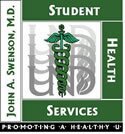|
Foot Problems
Ingrown Toenail
Ingrown toenail is a condition that most commonly affects the big toe. It can cause discomfort, tenderness, and redness. If there is an infection present, there may be drainage of pus from the area.
Causes
- This condition usually results when pressure from improper shoe wear and improper care of the toenails leads to pain of the tissue at the side of the nail. The chronic pressure of the nail edge rubbing against the nail groove causes irritation and swelling of the surrounding skin.
Prevention
- Cut nails straight across. Don't cut the nails shorter at the sides than in the middle.
- File the corners of the nail after clipping them if they are sharp.
- Wear shoes and socks that fit well.
Self-Care Steps
- Soak your foot in warm, soapy water for five to ten minutes, one to three times a day.
- Gently lift the nail away from the reddened skin at the outer corners with the tip of a nail file.
- Place a small piece of cotton soaked in an antiseptic or topical antibiotic, such as Neosporin, just under the outer corners.
- Repeat the previous three steps daily until the nail begins to grow correctly and pressure is relieved (wear roomy shoes during this time).
Treatment
- If caught early, non-surgical treatment works. Pressure on the toe should be reduced to a minimum by wearing sandals or no shoes. In more severe cases, surgery may be required to treat the condition.
Heel Spur (Plantar fasciitis)
Causes
- This condition causes pain on the bottom of the heel when putting weight on the foot. Heel pain probably comes from several causes.
Self-Care Steps and Treatment
- Treatment usually begins with adjustments to the shoe wear to try to reduce symptoms.
- Anti-inflammatory medications are sometimes used to decrease the inflammation in the fascia and reduce pain. Surgery is the last resort.
- Rest the foot and avoid high-impact activities.
- Apply ice to the heel two to three times daily.
- Support the arches of your feet to protect them from further stretching and tearing.
Bunions (Hallux valgus)
The bunion actually refers to the bump that grows on the side of the big toe. A bunion is usually the result of increased pressure, such as wearing pointed shoes. Symptoms include pain in the actual bunion area, and pain when wearing some types of shoes.
Causes
- There are many causes of bunions, but the primary one is tight, ill-fitting shoes, and shoes that constrict the forefoot over a long period of time (i.e., high heels).
Self-Care Steps and Treatment
- Choose shoes with a larger toe box (squared or rounded), along with good insoles.
- Put a piece of foam or cotton between the affected toes to see if it eases the pressure.
- Place padding around the bunion to relieve pressure and rubbing from shoes. Moleskin and bunion pads are available at most drugstores.
- Try using an arch support to stop the jamming of the long bone and the big toe.
- Anti-inflammatory medications such as aspirin, Tylenol, etc.
- Cold compresses.
- Soaking the foot in Epsom salts, Johnson and Johnson foot soaks, or Dome-Boro type solutions.
- Massage therapy and pads are also good palliative measures.
Athlete's foot (Tinea pedis)
Athlete's foot is a form of fungus infection of the feet. It is caused by the same infection that causes ringworm and jock itch. Athlete's foot usually shows up between the toes. Symptoms include redness, scaling, and peeling. The affected area may also itch. Athlete's foot does not occur among people who traditionally go barefoot.
Causes
- Moisture, sweating, and lack of proper ventilation of the feet present the perfect setting for the fungus of athlete's foot to grow. It occurs mostly among teenage and adult males. It is uncommon in women and children under the age of 12.
Self-Care Steps and Treatment
- Practice good personal hygiene to prevent all forms of fungal infections.
- Wash your feet daily.
- Dry your feet thoroughly, especially in between your toes.
- After drying, apply an antifungal product such as clotrimazole (Lotrimin) or tolnaftate (Tinactin).
- Wear cotton socks and change them daily or more frequently if they become damp. Don't wear socks made of synthetic materials.
- Avoid tight footwear, especially in the summer. Sandals are the best warm weather footwear.
- Dust an anti-fungal powder into your shoes in the summertime.
- Athlete's foot can be resistant to treatment, therefore it should not be ignored. However, it can be treated easily if the proper action is taken.
Resource Links:
v American Institute of Preventive Medicine. (www.healthy.net/asp/templates/Article.asp?Id=1516)
v American Academy of Dermatology. (www.aad.org/pamphlets/AthletFoot.html)
v heelspurs.com. (http://heelspurs.com/index.html)
v Footcare Direct. (www.footcaredirect.com/bunion.html)
v Foot Web. (www.footweb.com)
v Athletes Foot.com. (www.athletesfoot.com)
|
|


